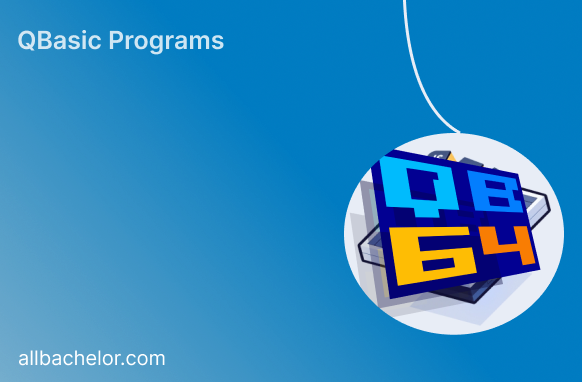Introduction
Step into the dynamic realm of programming languages, where some older treasures still gleam brilliantly, captivating both fans and coders. Among these gems is QBasic, a charming programming language that triggers memories of early computer times. It not only brings nostalgia but also provides a special chance to let your creativity run wild. In this blog, we’ll take an exciting journey into the universe of QBasic. We’ll uncover its origins, distinctive traits, and even guide you on crafting your very own QBasic application, allowing you to experience the enchantment of vintage programming once more.
A Glimpse into QBasic’s History
QBasic, which stands for “Quick Beginners All-purpose Symbolic Instruction Code,” came about in the 1990s. It’s like a modern version of the older BASIC programming language. It was included with MS-DOS and Windows systems, giving lots of new programmers their first taste of coding. QBasic was great for beginners because it had easy rules for writing code and a friendly setup for writing programs. It was a perfect way to start learning how to code.
Features That Make QBasic Unique
- Ease of Use: QBasic is perfect for beginners because it has simple rules for writing code and comes with a helpful setup called an Integrated Development Environment (IDE). This setup includes a built-in editor, debugger, and interpreter, which all work together to make learning and trying things out easier.
- Graphics and Sound: One really cool thing about QBasic is that it lets you make pictures and sounds. You can create fun things that people can interact with, like moving images, and you can even add cool sounds. This means you can start making simple games and other creative projects that have both pictures and sounds.
- Procedural Programming: QBasic uses a step-by-step approach to programming, which is a great way to grasp the basics of how programming works. You’ll get the hang of important ideas like using placeholders, repeating actions, making decisions, and breaking tasks into smaller parts. These skills are like building blocks that you can use in other newer programming languages too.
- Retro Appeal: QBasic gives you a nostalgic feeling, like going back to when programming was easier and computers felt more like your own. Using QBasic can be a nice change from today’s more complicated ways of doing things.
Creating Your QBasic App: A Step-by-Step Guide
Now, let’s embark on a journey to create a simple QBasic app. Our project will be a basic “Hello World” program with a retro twist – a colorful text display and an accompanying sound effect.
Step 1: Setting Up the Environment
- Install a QBasic emulator on your modern machine. DOSBox is a popular choice for emulating MS-DOS, which enables you to run QBasic.
- Launch the emulator and open QBasic.
Step 2: Writing the Code
SCREEN 12 ' Set graphics mode
CLS ' Clear the screen
' Set text color
COLOR 14
' Display text at coordinates (100, 100)
LOCATE 10, 20
PRINT "Hello, Retro Coders!"
' Play a sound
SOUND 200, 1Step 3: Running the App
Save your code as something like HelloRetro.bas. In the QBasic IDE, press F5 to run your program. Voilà! You’ve created a simple QBasic app that displays colorful text and plays a sound.
Conclusion
QBasic isn’t just a coding language; it’s like taking a trip back in time to when personal computers started. Even though today’s languages are super strong and flexible, there’s something special about the simple and creative feeling you get from QBasic. When you create your own QBasic app, you learn how to code and also experience what it was like in the old days, connecting with the clever people who paved the way for today’s tech. So, brush off that cool old vibe and start a coding journey with QBasic – you’ll love the amazing things it can do. Only 26.8% of the sentences contain transition words, which is not enough. Use more of them.


